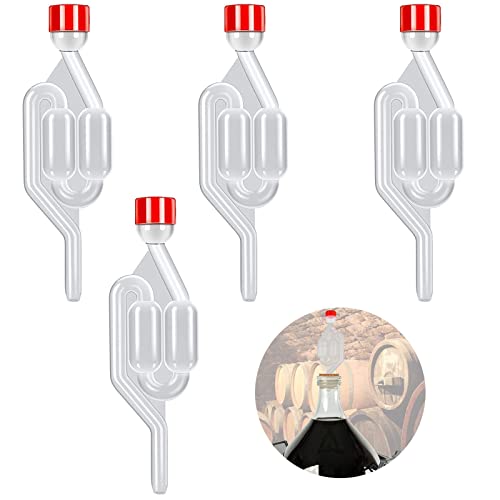I've just had a "brewday", and the pycnometer was in action. I'll give a brief summary so anyone interested can give it a go. (And I can look up this post up next time to remind me what to do!). If it looks too complicated for you, ignore it; don't tell me it's too complicated 'cos I'm not interested.
Brew into fermenter. A small sample (30ml) removed at near enough 20C. Pycnometer bottle filled (there's nothing to line up, no concerns about meniscus, no microscopic "scales" to read) and weighed. I know the weight of the empty bottle and it's precise volume. So I now know the weight of the sample (grams) which divided by the volume (millilitres) gives me the wort's density.
45.89gms - 18.28gms (empty bottle weight) = 27.61gms (weight of sample)
27.61gms / 26.37mls (volume of bottle) = 1.047g/ml (density of sample)
The density looks like an SG, but not quite there yet. The density of pure water at 20C is 0.998g/ml (look it up on t'Internet). Divide density of wort (at 20C) by density of water (at 20C). The water density is the "reference", in scientific circles the water would be at 4C (close to 1.000g/ml).
1.047g/ml / 0.998g/ml = 1.049 (the "OG" of my wort)
Bit of a phaff, but no question of accuracy (provided the weighing scales are good). This is what a hydrometer saves you (i.e. not me) from! I'll repeat the process for "FG" (no silliness converting to allow for alcohol content) and meantime one of those Tilt thingies is on duty monitoring progress (you think a pycnometer is a phaff? Then do not go near a "Tilt"! You even have to pay a premium to have one of them do your head in).




 For commercial brews I have two S&R basic hydrometers and a refractometer for hot wort, that I use and clean and pamper. I OG with my calibrated S&R Saccharometer. I then have a FG S&R Sacc all I use with temp compensation charts from S&R. I have a calibrated thermometer I calibrate my digital temp probes with at near boiling and iced water. I de-gass (shaky shaky wait, repeat) all FG brews as the bubbles fek up the readings. I have to send two samples for (Brewlab) analysis for HMRC. Usually all spot on so far thankfully. The calculation for back adjustment of HMRC duty is complicated and I don't do complicated,,, life is difficult enough
For commercial brews I have two S&R basic hydrometers and a refractometer for hot wort, that I use and clean and pamper. I OG with my calibrated S&R Saccharometer. I then have a FG S&R Sacc all I use with temp compensation charts from S&R. I have a calibrated thermometer I calibrate my digital temp probes with at near boiling and iced water. I de-gass (shaky shaky wait, repeat) all FG brews as the bubbles fek up the readings. I have to send two samples for (Brewlab) analysis for HMRC. Usually all spot on so far thankfully. The calculation for back adjustment of HMRC duty is complicated and I don't do complicated,,, life is difficult enough  :tinhat:
:tinhat:



































![BREWING THERMOMETER STICKERS ACCURATELY MONITOR FERMENTING BEER & WINE LIQUID TEMPERATURES 5PCS HOME BREW SPIRITS WINE LCD ADHESIVE [US]](https://m.media-amazon.com/images/I/311DDjo2X3L._SL500_.jpg)
